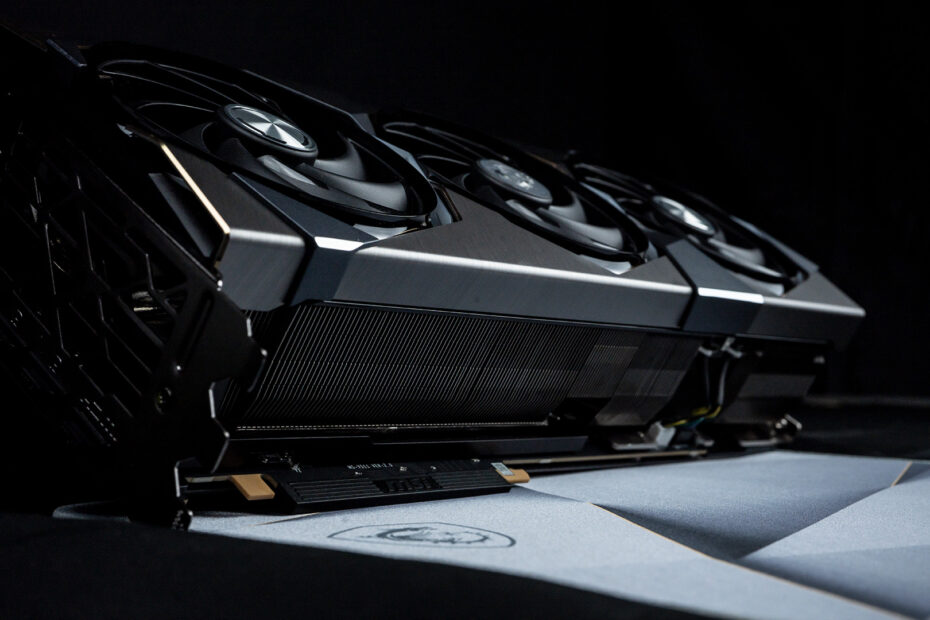As the gaming industry continues to evolve, so do the requirements for top-notch graphics cards that can keep up with the demands of the latest and greatest games. Enter NVIDIA’s GeForce RTX 40 series, a set of graphics cards taking the gaming world by storm. In this blog post, we’ll dive into the performance, features, and benefits of the GeForce RTX 40 series and explain why it outperforms other graphics cards. So sit back, relax and discover why NVIDIA’s GeForce RTX 40 series is the best choice for gamers.
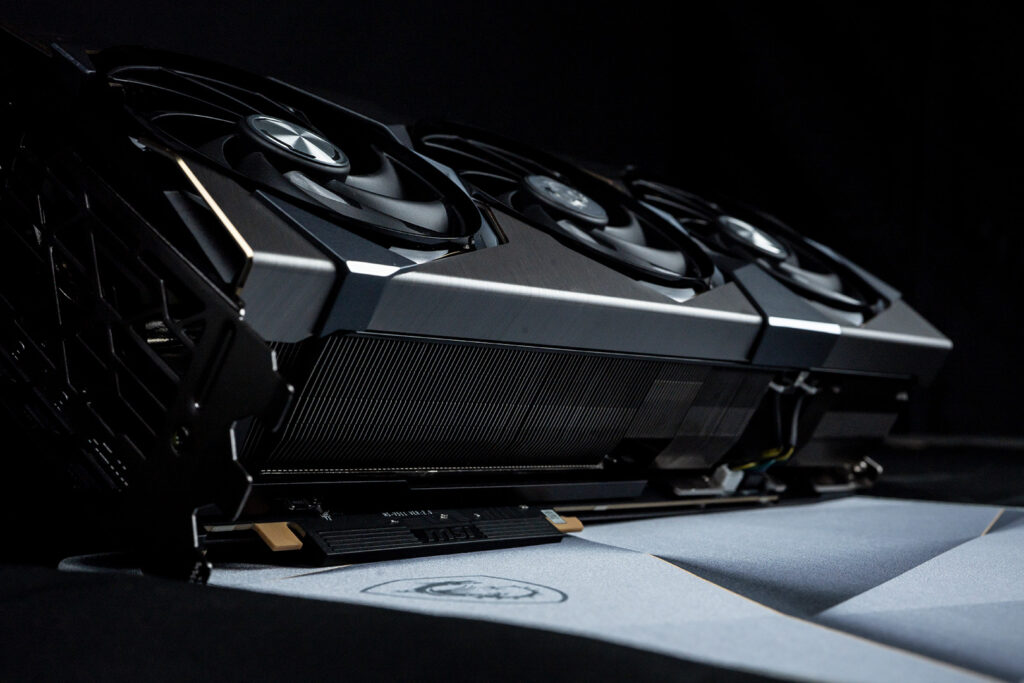
Unbeatable Performance
The NVIDIA GeForce RTX 40 series boasts incredible performance that outperforms any other graphics card on the market today. The GeForce RTX 4080 and 4090 are equipped with NVIDIA’s latest Ada Lovelace architecture, which delivers up to twice the performance of the previous generation. The GeForce RTX 4080 features 9728 CUDA cores, while the GeForce RTX 4090 boasts a whopping 16384 CUDA cores, making them the most powerful graphics cards currently available. These cards are the ultimate powerhouses for gamers who want to experience the most immersive and visually stunning games. The Geforce RTX 4080 and 4090 were put through their paces in various games, and the results speak for themselves. These cards can handle even the most demanding games without breaking a sweat. This level of power means that gamers can enjoy higher frame rates and smoother gameplay, even at the highest resolutions.
The GeForce RTX 40 series also boasts GDDR6X memory with up to 24 GB of VRAM capacity (RTX 4090), meaning gamers can play the latest games at high settings without experiencing any lag or stuttering. Additionally, the GeForce RTX 40 series graphics card supports PCIe 4.0, which provides faster data transfer rates than previous generations, allowing gamers to enjoy shorter loading times and more seamless transitions between game levels.
Features
In addition to its impressive performance, the NVIDIA GeForce RTX 40 series also comes with many features that make it an excellent choice for gamers.
Ray Tracing
The key feature of the GeForce RTX 40 series is its support for real-time ray tracing (RTX). Ray tracing, a cutting-edge rendering technique, has revolutionised the world of computer graphics by simulating realistic lighting and reflections. By tracing the path of light rays as they interact with various surfaces, ray tracing creates stunning visuals that closely mimic the way light behaves in the real world. This technique has been widely adopted in the film industry and now makes its presence felt in the gaming world, offering gamers an unparalleled level of immersion. As hardware capabilities advance, ray tracing is poised to become an integral part of future digital experiences, enhancing virtual environments’ visual appeal, elevating the art of storytelling, and giving gamers the most immersive visuals possible.

DLSS 3
The following key feature of the GeForce RTX 40 series is DLSS 3, but what is it?
DLSS is a video rendering technique developed by NVIDIA that aims to boost performance and frame rates by rendering frames at a lower resolution than displayed on your monitor. Then, using deep learning—a form of AI— upscales the frames so they look as clear and sharp as intended at the native resolution. Meaning higher frame rates are more achievable.
The most groundbreaking addition to DLSS 3 is the Optical Multi Frame Generation, which generates entirely new frames, but what does this mean? Previously, DLSS would generate new pixels to achieve higher FPS. NVIDIA says, “Optical Multi Frame Generation generates entirely new frames, rather than just pixels, delivering tremendous performance boosts. The new Optical Flow Accelerator incorporated into the NVIDIA Ada Lovelace architecture analyses two sequential in-game images. Then calculates motion vector data for objects and elements that appear in the frame but are not modelled by traditional game engine motion vectors. This technique dramatically reduces visual anomalies when AI renders elements such as particles, reflections, shadows and lighting.” In basic terms, NVIDIA’s latest GPUs calculate the motion of objects that appear in the frames. Then generates new frames based on this, giving the user performance like never seen before whilst using this technology.
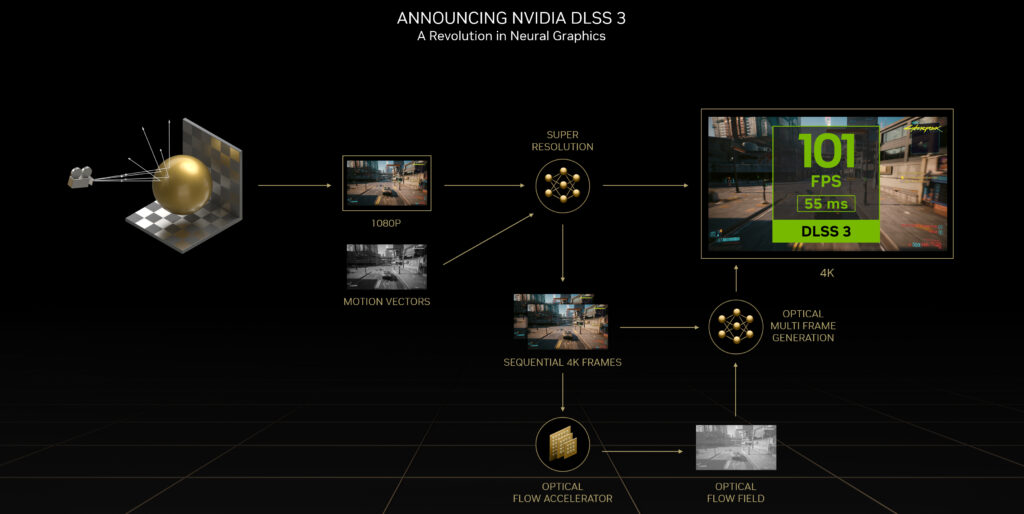
NVIDIA Reflex
The final key feature is NVIDIA Reflex, which comprises a collection of advanced technologies that work in tandem to minimise system latency, a critical factor affecting the responsiveness of games. At the heart of Reflex is the Low Latency Mode, which synchronises the CPU and GPU workloads more efficiently, preventing the GPU from becoming a bottleneck. This process reduces input lag, enabling players to see the results of their actions on-screen faster and improving their ability to make split-second decisions giving them an edge over competitors.
In addition to the Low Latency Mode, NVIDIA Reflex offers a suite of tools for game developers and gamers alike. The Reflex SDK allows developers to integrate Reflex’s latency-reducing techniques directly into their games, ensuring a smoother experience for all players. Meanwhile, the Reflex Latency Analyzer is a powerful tool designed for gamers to measure their end-to-end system latency, allowing them to fine-tune their hardware and in-game settings for optimal performance.
By pairing DLSS 3 and NVIDIA Reflex, gamers can enjoy stunning visuals and lightning-fast reactions, giving them the competitive edge they need to excel in their favourite supported titles.
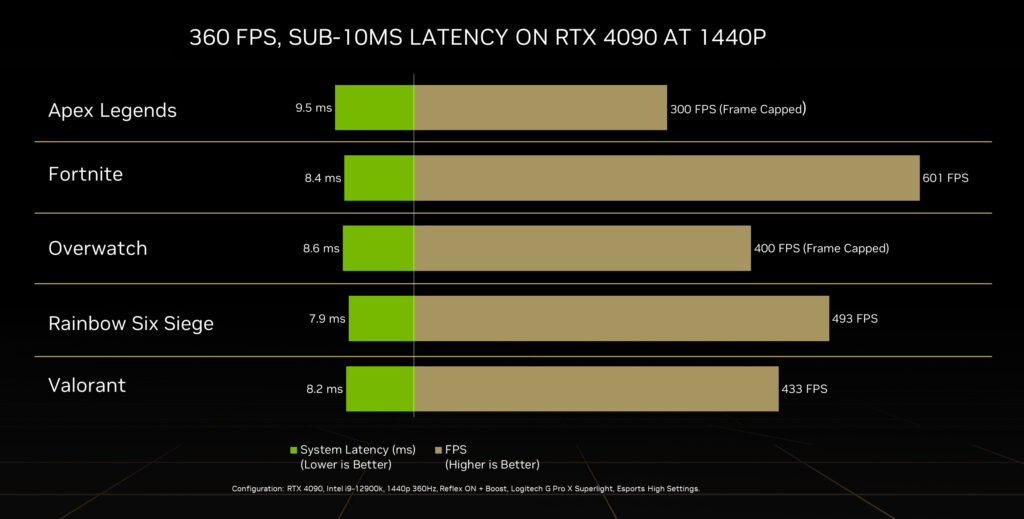
But Which GeForce RTX 40 Series GPU is Right for Me?
At the time of writing this blog post, there are four NVIDIA GeForce RTX 40 series GPUs to choose from, but the real question is, which one is the best for your gaming experience?
4070
Starting off at the midrange of NVIDIAs offerings, we look at the GeForce RTX 4070. This GPU is currently the lowest-performing GeForce RTX 40 series GPU and the cheapest, but this doesn’t mean it’s not an absolute powerhouse. The GeForce RTX 4070 is a jack of all trades for gaming, with it being able to handle super high refresh rates at 1080p, a stable 144fps at 1440p (game dependant), and it can just scrape through at low settings 4K. This GPU is for gamers happy to get the most out of a mid range GPUs without breaking the bank.
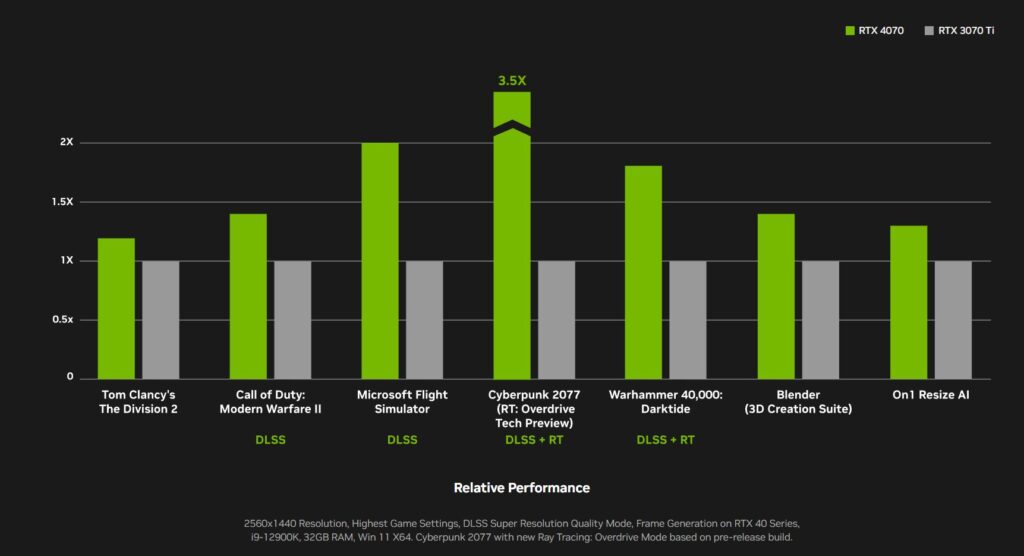
4070 Ti
Next up on the list is the GeForce RTX 4070’s older brother, the GeForce RTX 4070 Ti. This GPU sees slight improvements over the GeForce RTX 4070 by having over a 15% increase in its CUDA core count and slightly higher clock speeds, giving the GeForce RTX 4070 Ti roughly 25% better performance at both 1440p and 4K. This performance comes at the cost of approximately £200 more than the GeForce RTX 4070 (when sold at MSRP), but if you want to do some light 4K gaming without spending the big bucks on a GeForce RTX 4080, then the GeForce RTX 4070 Ti is the GPU for you.
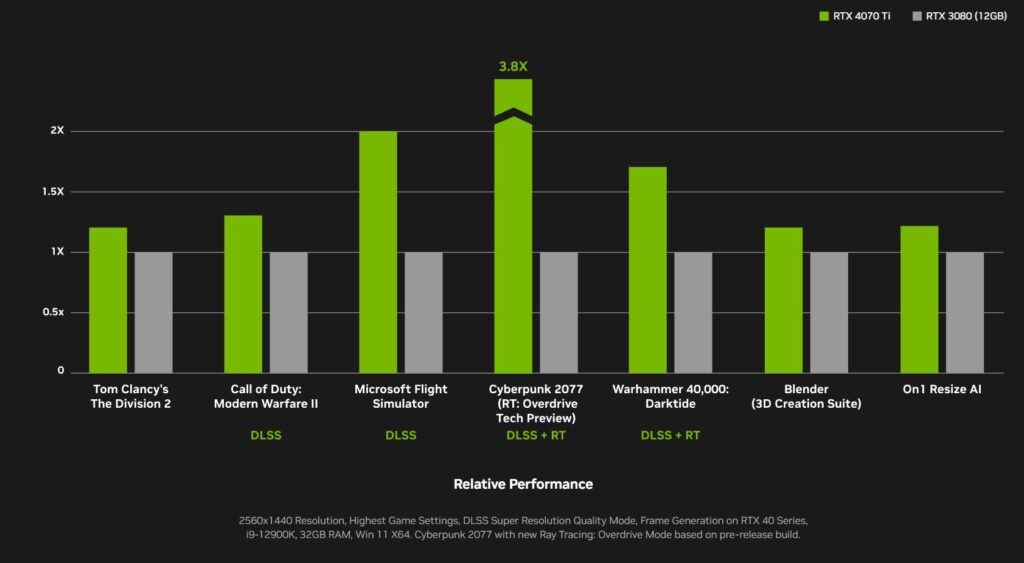
4080
Moving on to the higher end of the line-up, the GeForce RTX 4080 boasts over 2000 more CUDA cores than the 4070 Ti, and 4GB more VRAM again means a performance boost over the 4070ti, but how much? I hear you ask. Well, on paper, the GeForce RTX 4080 is 25% faster than the GeForce RTX 4070 Ti, but this doesn’t always translate to real-world performance. Whilst some games at 1440p, like Dying Light 2, will see a boost of up to 40% in performance, games like Assassins Creed Valhalla will only bag you 7% extra frames. On average, the GeForce RTX 4080 shines compared to the GeForce RTX 4070 Ti in 4K performance, coming in around 16% faster than the GeForce RTX 4070 Ti. The GeForce RTX 4080 is perfect for a Gamer who is looking to play with stable frames at 4k or super high refresh rates at 1440p
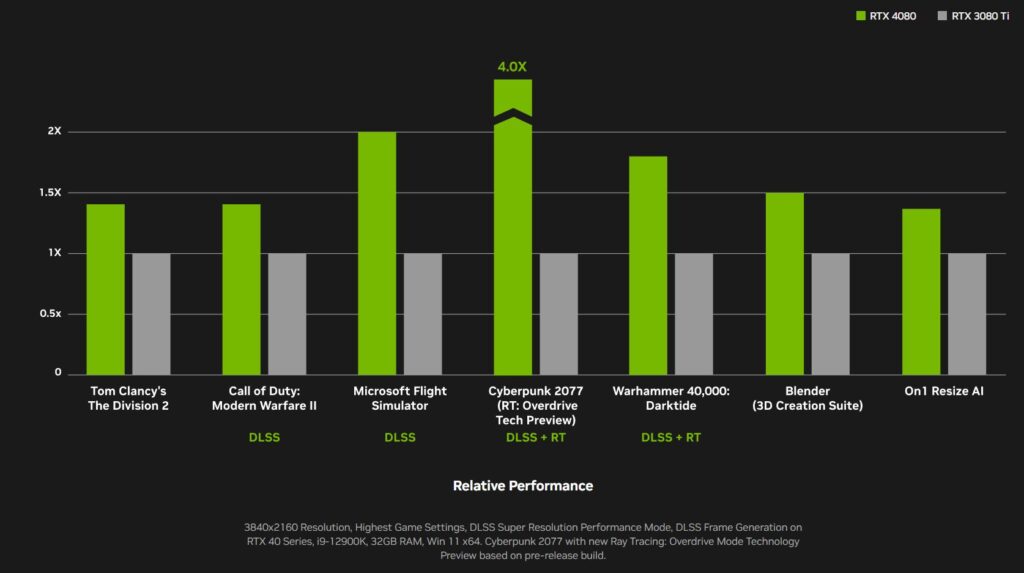
4090
Finally, saving the best till last, NVIDIA’s GeForce RTX 4090. The best of the best for GPUs available on the market today. With a whopping 16384 CUDA cores, the RTX 4090 nearly doubles its core count while adding 12GB more VRAM compared to the GeForce RTX 4080. But what is all this power good for? You will see roughly a 12% performance increase at 1440p, whilst at 4K, you will see over a 25% increase. The primary use for the GeForce RTX 4090 is for the best gaming experience at 4K. When paired with DLSS 3, you will see performance like you have never seen before, reaching high frames at 4K, which you could only dream of a few years ago.
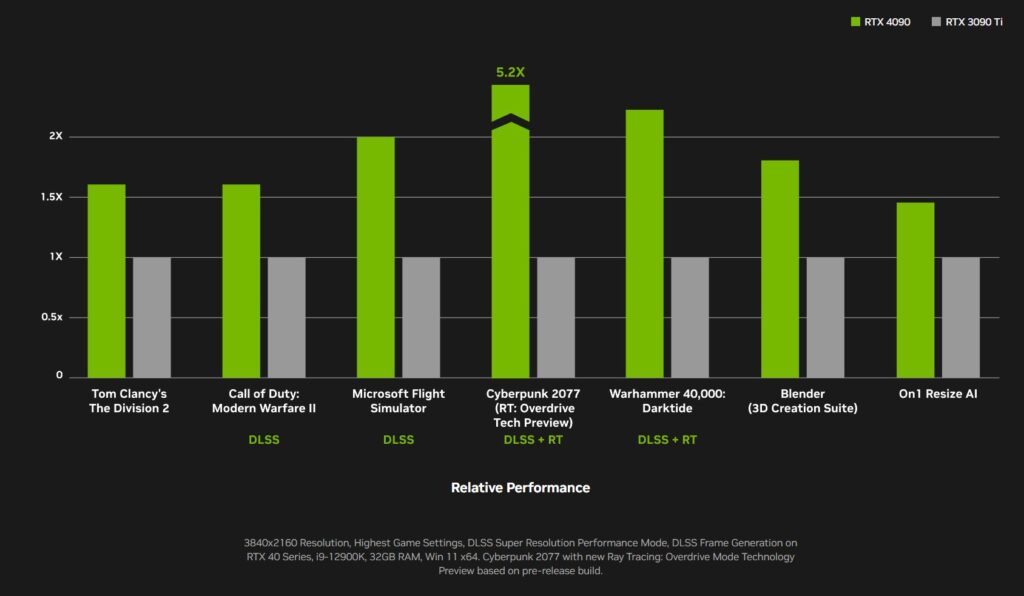
Overall no matter if you choose a mid-range GeForce RTX 40 series card or the flagship GeForce RTX 4090, thanks to DLSS 3’s Optical Multi Frame Generation and the new Ada Lovelace architecture, you will see massive performance gains from the previous generation of GPUs making the GeForce RTX 40 series the best option for gamers. So what are you waiting for? Order yours today and get performance like you have never experienced before!
